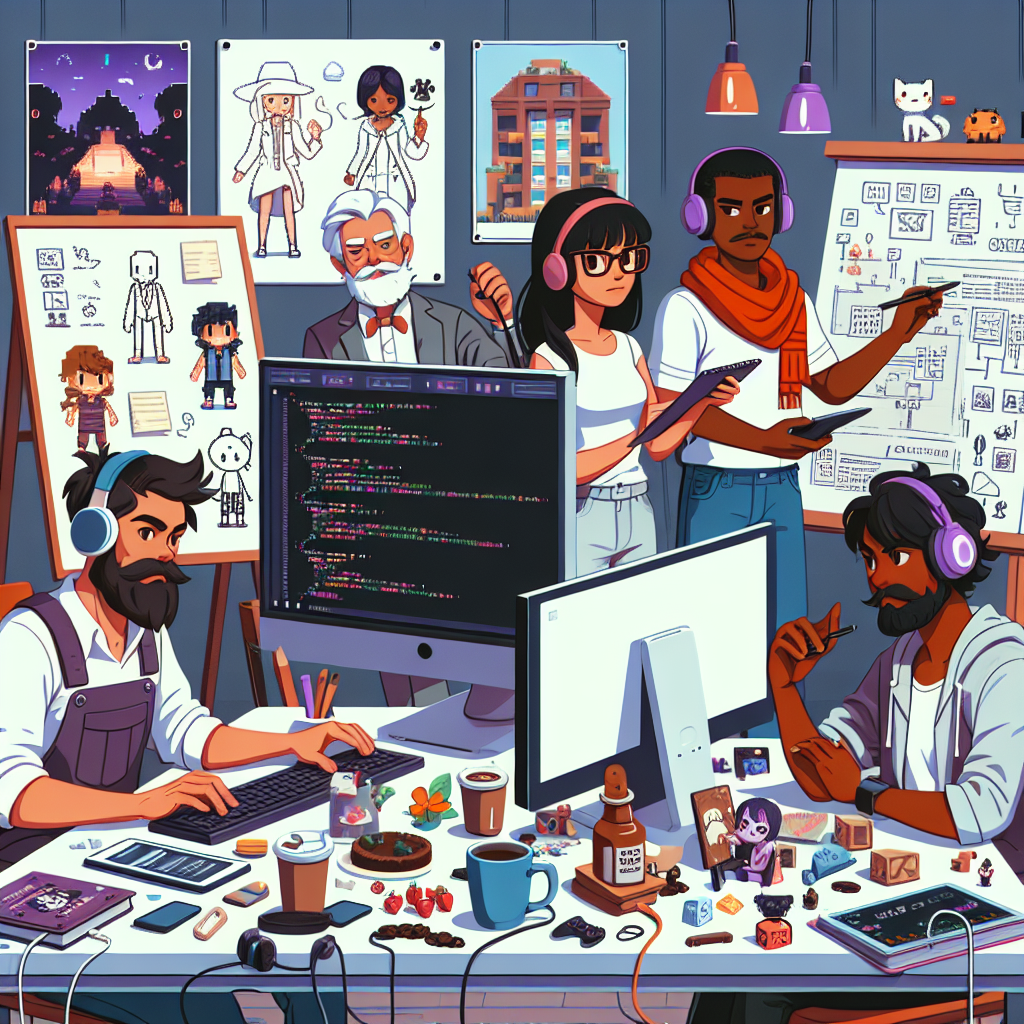-
Table of Contents
- The Rise of Indie Game Development: How Independent Developers are Changing the Gaming Industry
- What is Indie Game Development?
- The Growth of Indie Game Development
- The Impact of Indie Games on the Gaming Industry
- Success Stories of Indie Game Development
- The Challenges Faced by Indie Game Developers
- The Future of Indie Game Development
- Conclusion
The Rise of Indie Game Development: How Independent Developers are Changing the Gaming Industry

The gaming industry has come a long way since its early days of arcade machines and console games. With the rise of technology and the internet, the industry has evolved into a multi-billion dollar market, with big-name companies dominating the scene. However, in recent years, there has been a significant shift in the gaming landscape, with the emergence of indie game development.
What is Indie Game Development?
Indie game development refers to the creation and distribution of video games by independent developers or small teams, without the financial and logistical support of a major game publisher. These developers often work on a shoestring budget, relying on their creativity, passion, and determination to bring their ideas to life.
Unlike traditional game development, where the focus is on creating blockbuster titles with mass appeal, indie game developers have the freedom to experiment and create games that are unique, innovative, and often cater to niche audiences. This has led to a surge in the popularity of indie games, with many of them achieving critical and commercial success.
The Growth of Indie Game Development
The rise of indie game development can be attributed to several factors. One of the main reasons is the accessibility of game development tools and platforms. With the advent of game engines like Unity and Unreal, and distribution platforms like Steam and Itch.io, it has become easier for independent developers to create and release their games to a global audience.
Another factor is the changing consumer preferences. With the rise of digital distribution and the increasing popularity of mobile gaming, players are more open to trying out new and unique games from independent developers. This has created a demand for indie games, leading to a surge in their production and consumption.
The Impact of Indie Games on the Gaming Industry
The rise of indie game development has had a significant impact on the gaming industry. It has challenged the dominance of big-name companies and has given a platform for smaller developers to showcase their talent and creativity. This has led to a more diverse and inclusive gaming landscape, with a wide variety of games catering to different tastes and preferences.
Indie games have also brought about a change in the business model of the gaming industry. With the traditional model of game development and distribution being expensive and risky, many developers are now turning to crowdfunding platforms like Kickstarter and Patreon to fund their projects. This has allowed them to retain creative control over their games and has given them the freedom to experiment without the pressure of meeting sales targets.
Success Stories of Indie Game Development
One of the most well-known success stories of indie game development is that of Minecraft. Developed by Markus Persson, also known as Notch, Minecraft was initially released as an alpha version in 2009. It gained a cult following and was eventually acquired by Microsoft for $2.5 billion in 2014. Minecraft has since become one of the best-selling video games of all time, with over 200 million copies sold.
Another notable success story is that of Undertale, developed by Toby Fox. Released in 2015, Undertale received critical acclaim for its unique storytelling, characters, and gameplay. It has sold over 3 million copies and has won numerous awards, including Game of the Year at The Game Awards 2015.
The Challenges Faced by Indie Game Developers
While the rise of indie game development has opened up new opportunities for developers, it also comes with its own set of challenges. One of the main challenges is the lack of resources and funding. Without the backing of a major publisher, indie developers often have to rely on their personal savings or crowdfunding to finance their projects.
Another challenge is the oversaturation of the market. With the increasing number of indie games being released, it has become harder for developers to stand out and gain recognition for their work. This has led to a highly competitive market, where only a few games achieve success.
The Future of Indie Game Development
The future of indie game development looks bright, with more and more developers turning to this model of game development. With the advancements in technology and the increasing acceptance of indie games by players, we can expect to see more innovative and unique games being released in the coming years.
However, it is essential to address the challenges faced by indie developers and provide them with the necessary support and resources to thrive. With the right support and opportunities, indie game development has the potential to revolutionize the gaming industry and bring about a new era of creativity and diversity.
Conclusion
Indie game development has come a long way since its humble beginnings. It has challenged the traditional model of game development and has given a voice to independent developers. With its impact on the gaming industry and its potential for growth, it is safe to say that indie game development is here to stay. As players, we can look forward to more unique and innovative games from independent developers, and as a society, we must continue to support and encourage the growth of this industry.

Leave a Reply